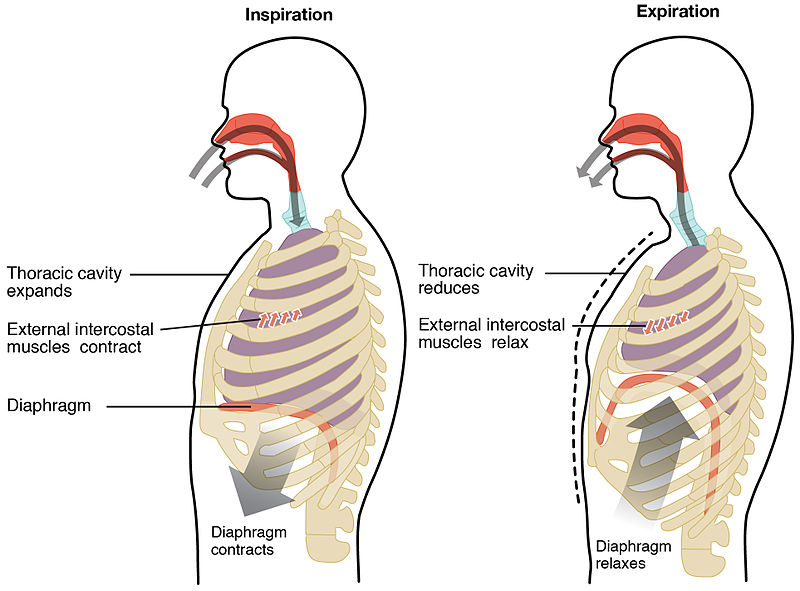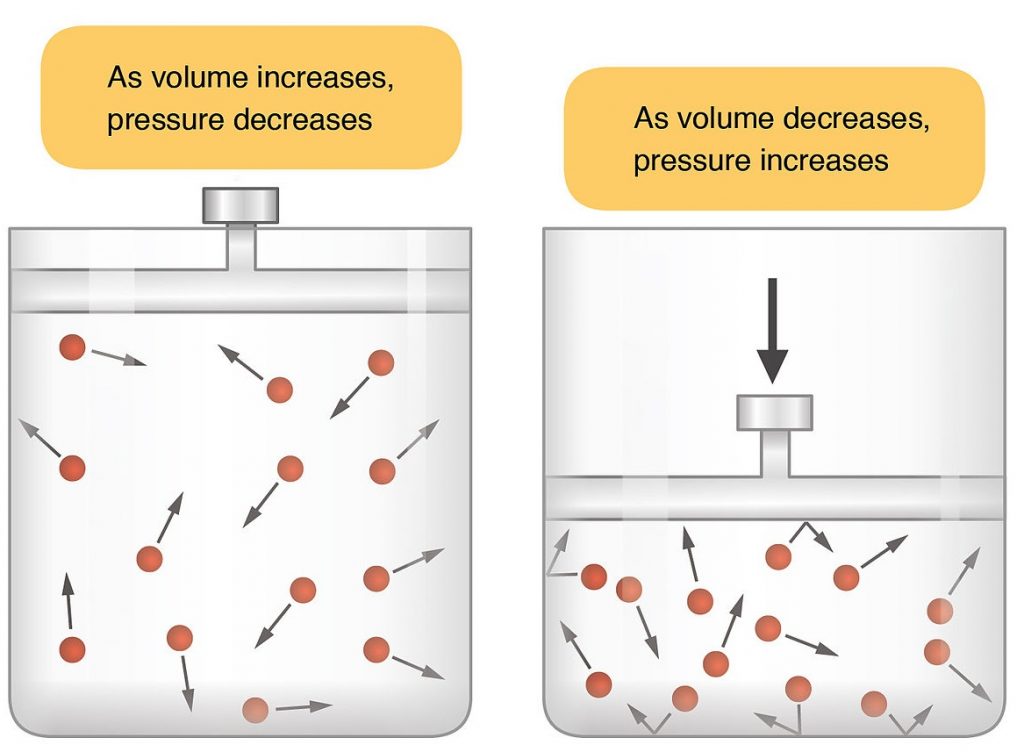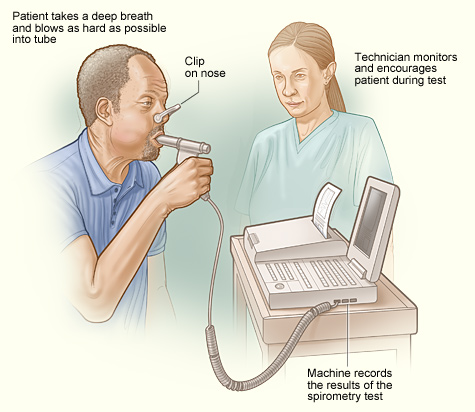Mechanics of Ventilation
Published (updated: ).
Ventilation, or breathing, is the movement of air through the conducting passages between the atmosphere and the lungs. The air moves through the passages because of pressure gradients that are produced by contraction of the diaphragm and thoracic muscles.
Pulmonary ventilation is commonly referred to as breathing. It is the process of air flowing into the lungs during inspiration (inhalation) and out of the lungs during expiration (exhalation). Air flows because of pressure differences between the atmosphere and the gases inside the lungs.
Air, like other gases, flows from a region with higher pressure to a region with lower pressure. Muscular breathing movements and recoil of elastic tissues create the changes in pressure that result in ventilation.

Inspiration
Inspiration (inhalation) is the process of taking air into the lungs. It is the active phase of ventilation because it is the result of muscle contraction. During inspiration, the diaphragm contracts and the thoracic cavity increases in volume. This decreases the intraalveolar pressure so that air flows into the lungs. Inspiration draws air into the lungs.
Expiration
Expiration (exhalation) is the process of letting air out of the lungs during the breathing cycle. During expiration, the relaxation of the diaphragm and elastic recoil of tissue decreases the thoracic volume and increases the intraalveolar pressure. Expiration pushes air out of the lungs.
Boyle’s law states that the volume of gas is inversely proportional to pressure (when temperature is constant). Therefore:

The space between the outer surface of the lungs and inner thoracic wall is known as the pleural space. This is usually filled with pleural fluid, forming a seal which holds the lungs against the thoracic wall by the force of surface tension. This seal ensures that when the thoracic cavity expands or reduces, the lungs undergo expansion or reduction in size accordingly.
During breathing, the contraction and relaxation of muscles acts to change the volume of the thoracic cavity. As the thoracic cavity and lungs move together, this changes the volume of the lungs, in turn changing the pressure inside the lungs.
- When the volume of the thoracic cavity increases – the volume of the lungs increases and the pressure within the lungs decreases.
- When the volume of the thoracic cavity decreases – the volume of the lungs decreases and the pressure within the lungs increases.
Respiratory Volumes and Capacities
Under normal conditions, the average adult takes 12 to 20 breaths a minute. A breath is one complete respiratory cycle that consists of one inspiration and one expiration.

An instrument called a spirometer is used to measure the volume of air that moves into and out of the lungs. The process of taking the measurements is called spirometry. Respiratory (pulmonary) volumes are an important aspect of pulmonary function testing because they can provide information about the physical condition of the lungs.
Factors such as age, sex, body build, and physical conditioning have an influence on lung volumes and capacities. Lungs usually reach their maximum capacity in early adulthood and decline with age after that.
